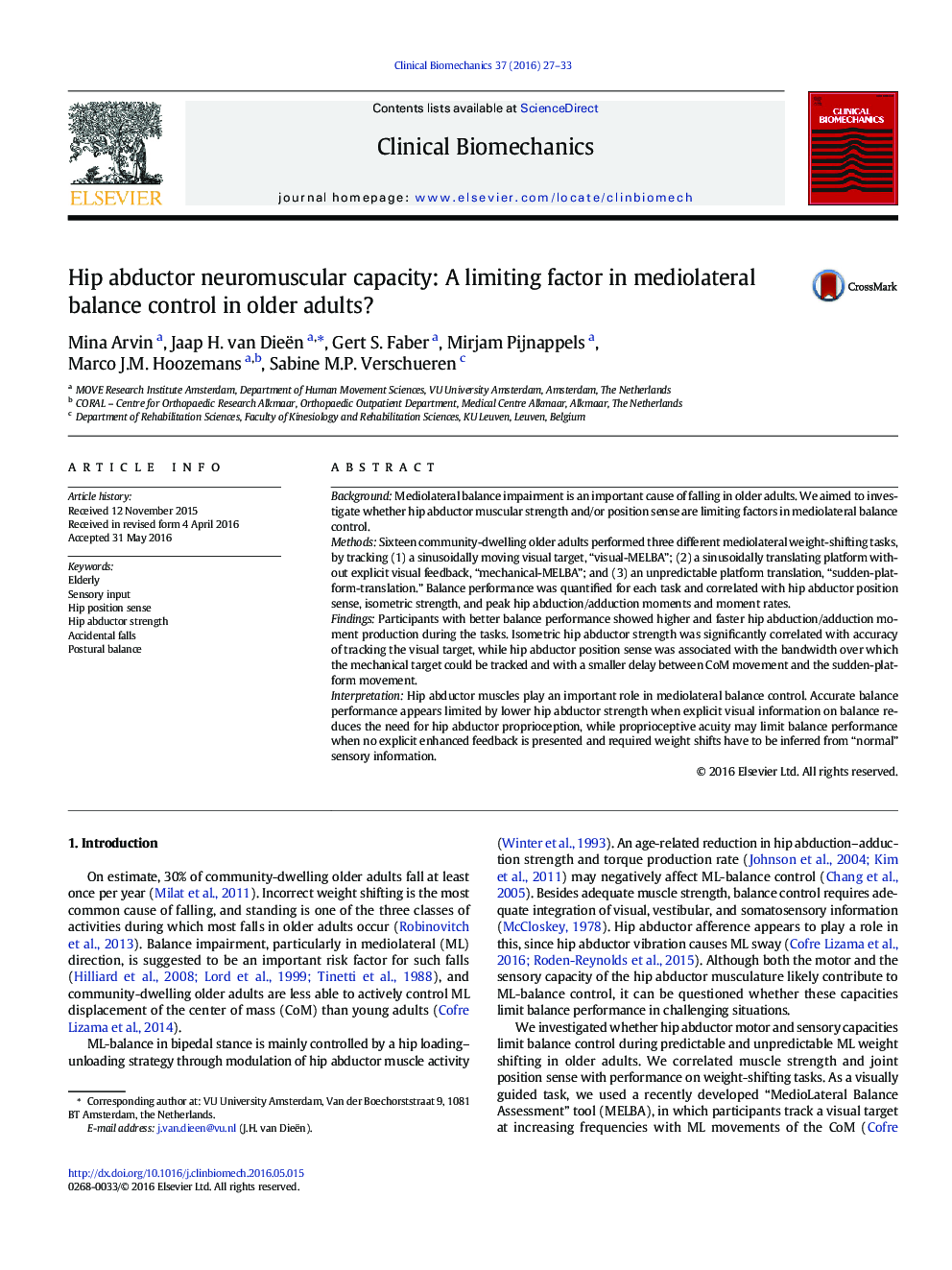| Article ID | Journal | Published Year | Pages | File Type |
|---|---|---|---|---|
| 4050014 | Clinical Biomechanics | 2016 | 7 Pages |
•The role of hip abductor capacity in mediolateral balance control was investigated in older adults.•Hip abductor position sense and strength were correlated with balance performance.•Mediolateral balancing required substantial and fast hip moment generation.•Performance with explicit visual feedback on balance is limited by hip abductor strength.•Performance on platform translation without explicit visual feedback is limited by hip abductor proprioception.
BackgroundMediolateral balance impairment is an important cause of falling in older adults. We aimed to investigate whether hip abductor muscular strength and/or position sense are limiting factors in mediolateral balance control.MethodsSixteen community-dwelling older adults performed three different mediolateral weight-shifting tasks, by tracking (1) a sinusoidally moving visual target, “visual-MELBA”; (2) a sinusoidally translating platform without explicit visual feedback, “mechanical-MELBA”; and (3) an unpredictable platform translation, “sudden-platform-translation.” Balance performance was quantified for each task and correlated with hip abductor position sense, isometric strength, and peak hip abduction/adduction moments and moment rates.FindingsParticipants with better balance performance showed higher and faster hip abduction/adduction moment production during the tasks. Isometric hip abductor strength was significantly correlated with accuracy of tracking the visual target, while hip abductor position sense was associated with the bandwidth over which the mechanical target could be tracked and with a smaller delay between CoM movement and the sudden-platform movement.InterpretationHip abductor muscles play an important role in mediolateral balance control. Accurate balance performance appears limited by lower hip abductor strength when explicit visual information on balance reduces the need for hip abductor proprioception, while proprioceptive acuity may limit balance performance when no explicit enhanced feedback is presented and required weight shifts have to be inferred from “normal” sensory information.
